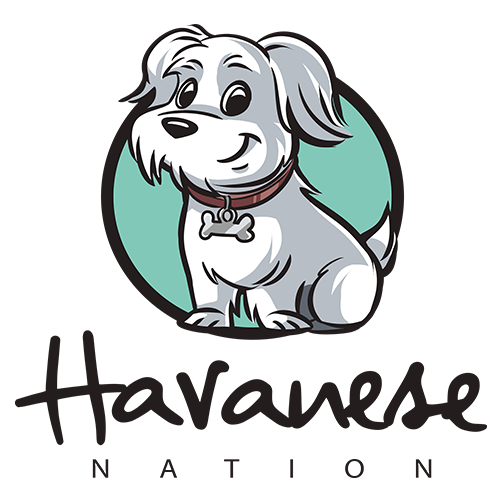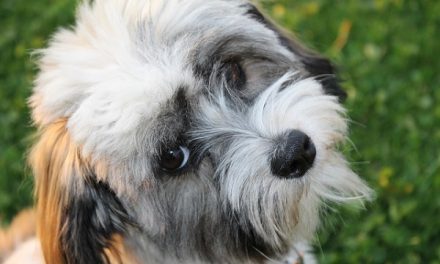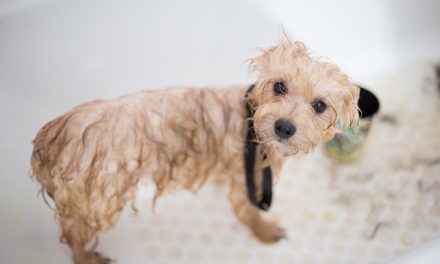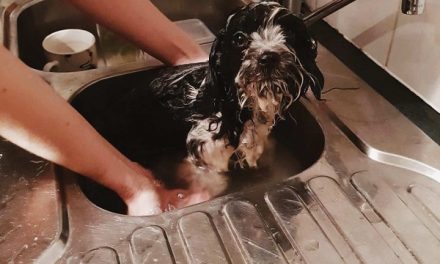If you’re a dog lover on the hunt for a new furry friend to join your family, you may have considered the Havanese as an option. You’re looking for a cuddly dog that will give you lots of love, but you may not be sure whether the Havanese is a good choice in that respect.
One thing you will be happy to learn is that Havanese dogs love cuddles. If you want a cuddly dog, the Havanese are perhaps one of the most cuddly dogs out there. These dogs are a lot of fun to cuddle due to their silky smooth hair that feels really nice as you run your hands through it. These adorable pooches are practically cuddle-magnets!
Havanese Dogs and Cuddling
Temperament
If you’ve ever encountered a Havanese dog you’ll know first hand that these dogs are very social creatures! They love everyone, from your mother, to your sister, to the mailman and even your overbearing mother in law. Yep, they really do love EVERYONE.
The Havanese dog makes a fantastic family pet, so they’re ideal for singles, couples and families. You can travel with them and they are also docile so can deal with tiny little child hands that may not know how a dog wants to be treated yet. These cheerful furry creatures are probably best suited to owners that have flexible work schedules and are able to see them often.
Lots and Lots of Attention, Please!
One thing you will be really happy to know if you’re looking to get a Havanese dog is that they require a lot of affection. These dogs like to be cuddled up to their owners most of the time. There’s simply not enough time to lounge on your own in your little pet bed when you have so much love to give!
This does also mean, however, that it’s not a great idea to leave these dogs on their own for very long. If you do, they can sometimes get depressed and end up having some behavioral issues as a result. These are very family oriented pets that love to have their family close by.
Are they good with children? Yup! Havanese dogs love children, and as long as they are given plenty of love they will give you lots of affection in return! These dogs are very playful and not particularly independent. The phrase ‘being followed like a puppy dog’ is certainly applicable when it comes to baby and adult Havanese dogs alike!
Loving Strangers
We weren’t joking when we said that Havanese dogs are very sociable and affectionate animals. They are incredibly social if they are properly exposed to strangers as soon as possible. If you get your Havanese as a puppy, try to get them used to seeing new people and animals as much as you are able to. Try to take them out to the park when they are young and watch them as they socialize to ensure that they’re playing nice.
If your dog is well socialized when they are younger then they will be quite good at cuddling with strangers – they may even attempt to snuggle with your other pets – even the cat!
It should be noted, however, that not all dogs are made the same way. Sure, your Havanese may be peaceful and gentle with any strangers that they encounter, but your particular dog may be a little more reserved. Your dog may not feel all that comfortable when they snuggle into a stranger’s lap, and they may just run straight back to you to feel more comfortable. Havanese are pretty loyal dogs at heart, so naturally most of them are going to prefer cuddling up to you than to a random stranger.
Cuddling and Grooming
One of the nicest things about having your cuddly little Havanese dog is that you can groom them for ages. You should ideally groom your Havanese dog once a way, but you can groom them all through the day and they should be quite happy.
You may find that you need an excuse to sit down and relax after a busy day. Your Havanese dog is following you around, which will give you the ideal excuse to sit down and groom them, giving you some much needed bonding time with your special pooch.
You should make sure that you have all of the grooming tools that you need at your disposal, such as toenail clippers, hairbrushes, and special grooming brushes. You will have a great time grooming your dog’s soft and gorgeous locks. What better excuse is there to spend time with your dog?
It’s worth mentioning that Havanese dogs can be a little tricky to groom because they have such long fur. This means that you will need to ensure that you are frequently grooming, shampooing and brushing your Havanese to keep them healthy. You should be trying to groom them at least twice a week, and you will need to brush the fut in layers. It’s also worth applying a coat dressing or a light oil to their coat, especially during months of extreme weather such as the winter and summer seasons.
Age Changes
As we age, our personality changes. The same is true of Havanese dogs. Your Havanese pup may have oodles of energy and may be extremely inquisitive, constantly exploring the world around them. They may not be the same way as they age.
You may even see that your older Havanese dogs prefer to cuddle more, as they may end up getting more calm and lazy as they get older. A lot of their curiosity will diminish as they age, or it may well be that the dog just becomes more comfortable around you. There really is no way of knowing why.
Personality Differences
We’ve already touched on this a little earlier in this article, but it’s incredibly important to ensure that you ensure that Havanese Dogs are not made in cookie cutter shape. They are all different, from the way they look, to their quirks and most importantly, to their personality. You could talk to 40 different people who own Havanese dogs and every single one of them is going to tell you something different about their Havanese dog. As a result of this, it’s important to note that not every single Havanese dog is as cuddly as we’ve said in this article. You may find that your Havanese dog is very independent and would rather his own space as opposed to being cuddled up with you.
In addition, your dog may not like to spend as much time with you as they do with other dogs or strangers for example. Your dog may just want to be petted and would prefer not to be cuddled. You may find your pup with just one paw on your leg so that he can let you know that he’s there.
If your Havanese dog isn’t particularly fond of cuddles, you needn’t worry. It’s probably just down to their personality as opposed to there being something wrong with them.
Please Don’t Leave Me!
As we’ve already mentioned, being left alone for too long is like a Havanese dog’s worst nightmare. These dogs are incredibly close to their family, so they like to be around them all the time. Some people even affectionately call them ‘velcro dogs’ – you’re pretty unlikely to be left alone even when it’s time for a bathroom break.
If you leave your Havanese dog alone for too long, they may get lonely and bored, and couple end up barking, digging and chewing your furniture. This could be a sign of separation anxiety. As a result of this, it’s not a good idea to get one of these dogs if most of the family are out at work or school for the whole day. If you work from home or are only a part time worker, then you should think about letting one of these little guys into your family.
Conclusion
If you’re looking for a dog that loves cuddles, you will be very happy welcoming a Havanese into your home. These dogs have such an affectionate temperament that they are arguably one of the most enjoyable toy dog breeds to have as a family pet.
Not only that, but the Havanese is also both intelligent and responsive, but doesn’t try to take liberties with this intelligence. These dogs are great fun to train and to love.
In addition, Havanese dogs are not particularly loud dogs, so they would be ideal for apartment living. A family dog through and through, the Havanese will make a lifelong companion – with plenty of cuddles the whole way through!




